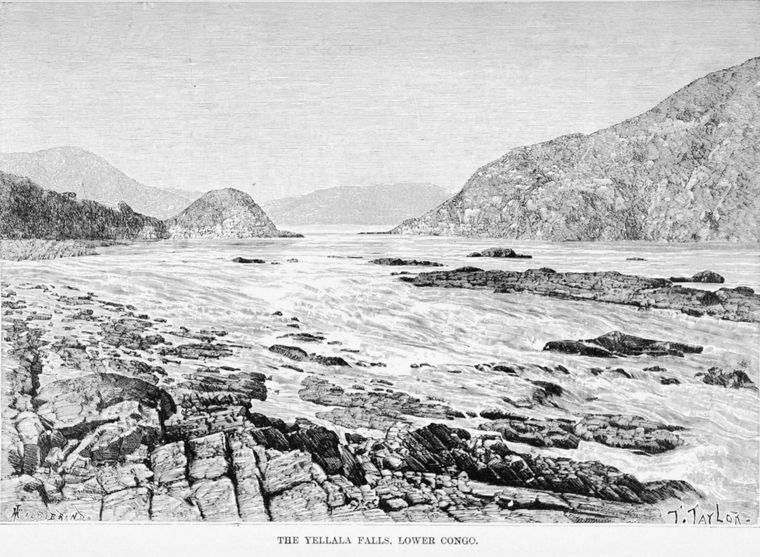There is no more poignant memorial to this process than a monument left by the sailors of the Portuguese captain Diogo Cao up the River Congo at the Yellala Falls Africa . The Portuguese could sail no further. Undeterred they abandoned their ship or ships and scrambled ten miles over the rocks, in the hope of finding navigable water upstream, but the succession of rapids defeated them.

This venture is completely unrecorded in Portuguese chronicles. The only testimony is hidden on the rock wall of an overhanging cliff high above the crashing torrent, where the seamen left a carving. It shows the arms of King John II, the energetic Portuguese king who must have ordered this expedition. Next to it there is a cross and some names: ‘Here arrived the ships of the illustrious monarch Dom Joao the Second of Portugal, Diogo Cao, Pedro Anes, Pedro da Costa, Alvaro Pyris, Pero Escolar A…’
To the lower right and carved in a different hand, there is a second group of names: ‘Joao de Samtyago, Diogo Pinheiro, Goncalo Alvares + of sickness Joao Alvares…’ And in another place, just a Christian name: ‘Antam' [Antao = Anthony]
All these inscriptions seem broken off – their circumstances as ambiguous as a last entry in the diary of a polar explorer. They give us the names of the men who commanded the ships – Diogo Cao and the others by the cross; but the commanders were probably not present. It is likely that Cao sent the expedition upriver to probe the navigability of the Congo Africa , which remained undiscovered until 1911. We know at least that some of the men must have made it back because one of them, Joao de Samtyago [Santiago ], was a pilot on a famous follow-up voyage by Bartolomeu Dias, who rounded the Cape of Good Hope for the first time in 1488.



Looking forward to your book! Great post - as usual.
ReplyDelete